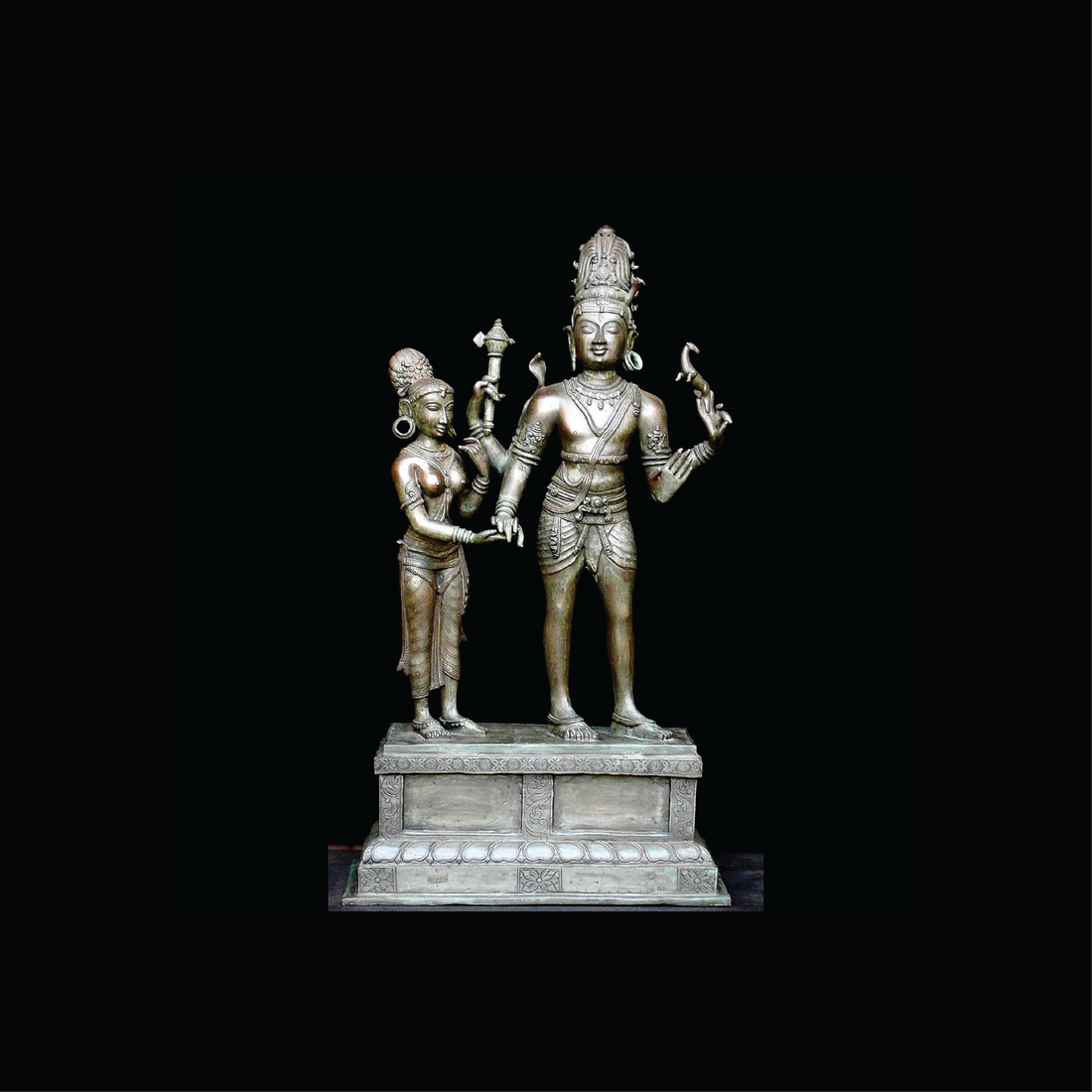The Chola dynasty, which ruled over South India from the 9th to the 13th centuries, left an indelible mark on the country's artistic heritage. Among their most remarkable contributions were the exquisite bronze sculptures that became emblematic of Chola art. These masterpieces, known as Chola style bronze sculptures, underwent a remarkable evolution over the centuries, reflecting the changing socio-religious landscape of India.
Origin and Early Developments- The genesis of Chola style bronze sculptures can be traced back to the Pallava period (4th to 9th centuries). During this era, temple architecture and art flourished, laying the foundation for the Chola sculptural tradition. However, it was during the reign of the Chola dynasty that these sculptures truly flourished, becoming more refined and intricate.
Iconography and Influences- Chola style bronze sculptures predominantly depicted Hindu deities, with Shiva and his various forms being the most popular subjects. Other gods and goddesses like Vishnu, Parvati, Durga, and Ganesh also found representation. The sculptures were made using the lost-wax casting technique, allowing artisans to create intricate details and delicate features.
One significant influence on Chola bronze sculptures was the Bhakti movement, which emphasized a personal and emotional connection with the divine. This led to the portrayal of deities in more human-like and approachable forms, reflecting the changing devotional practices of the time.
Artistic Characteristics- Chola style bronze sculptures were known for their fluidity, sensuousness, and naturalism. The artists skillfully captured the essence of movement and emotion in the figures, portraying them with graceful postures and subtle facial expressions. The sculptures often had elaborate jewellery and ornamental features, enhancing their divine aura. The sculptors displayed a keen understanding of anatomy and proportions, which lent a lifelike quality to the figures. The creation of these sculptures required both technical expertise and a deep spiritual connection with the subject matter, making each piece a true work of art.
Patronage and Cultural Impact- The Chola rulers were great patrons of art and architecture, and their support for bronze sculpting greatly contributed to the evolution of this art form. Temples served as centres of religious, cultural, and artistic activities, fostering a vibrant environment for artists to flourish.
The Chola style bronze sculptures also influenced art in other regions of India. Skilled craftsmen from the Chola kingdom travelled to other parts of the country, carrying their expertise and influencing local artistic traditions. Thus, the legacy of Chola art spread far beyond their geographical boundaries.
Decline and Revival- With the decline of the Chola dynasty, the patronage for bronze sculptures diminished. Political upheavals, invasions, and shifts in religious and artistic preferences led to a decline in the production of Chola style bronze sculptures.
However, in the 19th and 20th centuries, there was a revival of interest in this ancient art form. Scholars, historians, and art enthusiasts recognized the cultural significance and artistic brilliance of Chola bronze sculptures. Efforts were made to preserve and revive this heritage, and skilled artisans began recreating Chola-style sculptures to ensure the art's continuity.
The evolution of Chola style bronze sculptures in India is a testament to the rich artistic heritage of the Chola dynasty. These masterpieces exemplify the fusion of artistic brilliance, spiritual devotion, and cultural influences of their time. Today, they stand as a living testament to the enduring legacy of Indian art, continuing to inspire and captivate art lovers around the world.

